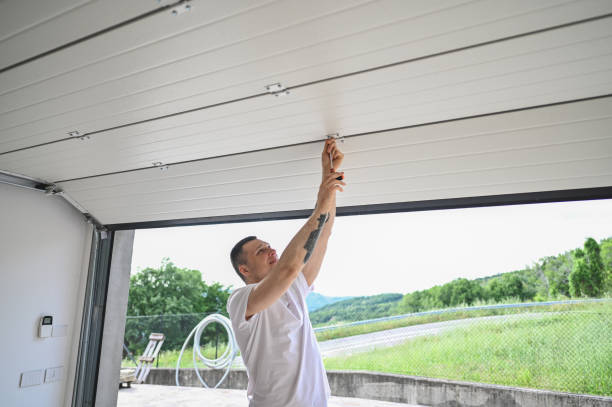A garage door is an essential component of any home, offering security, convenience, and even aesthetic appeal. However, like any mechanical system, it is subject to wear and tear over time, which can lead to functional problems. Homeowners often encounter issues such as malfunctioning openers, broken springs, or misaligned tracks. Regular maintenance and prompt repairs are necessary to keep the door functioning efficiently and safely. Understanding the common problems, troubleshooting methods, and when to seek professional help can save you both time and money in the long run. This guide will provide a detailed overview of garage door repair, ensuring you have the knowledge to handle minor issues on your own while recognizing when expert intervention is required.
Common Garage Door Issues
Garage doors are composed of multiple moving parts, and any of these components can fail due to age, weather conditions, or excessive use. One of the most common problems homeowners face is a garage door that refuses to open or close properly. This issue is often caused by dead remote batteries, sensor misalignment, or a faulty garage door opener. Another frequent concern is excessive noise during operation, which usually indicates loose hardware, inadequate lubrication, or worn-out rollers. Uneven movement, where one side of the door moves faster than the other, may point to a broken spring or track misalignment. If your garage door closes too quickly or slams shut unexpectedly, it could be due to broken tension springs or damaged cables, both of which pose safety risks. Remote control malfunctions, such as unresponsiveness, can often be resolved by replacing the batteries, reprogramming the remote, or eliminating signal interference.
Troubleshooting Tips
Before calling a professional, you can attempt a few troubleshooting steps to identify and resolve minor garage door problems. First, check the power source to ensure that the garage door opener is plugged in and that the circuit breaker has not tripped. If the door does not move smoothly, inspect the tracks for debris or dirt buildup and clean them as needed. Misaligned tracks can cause the door to stick or function unevenly, so ensure they are properly positioned. Lubricating moving parts is another essential maintenance step—apply a silicone-based lubricant to the rollers, hinges, and springs to reduce friction and noise. If the door does not close fully, inspect the safety sensors to ensure they are aligned and free from dirt or obstructions. Additionally, periodically tightening loose bolts, nuts, and screws can prevent excessive movement and potential damage to the door’s hardware. By following these simple steps, you may be able to fix minor problems without professional assistance.
When to Call a Professional
While some minor garage door issues can be handled with DIY solutions, certain repairs should always be left to professionals. Attempting to fix high-tension components, such as garage door springs, can be extremely dangerous without the right tools and experience. If you notice that the springs are broken or appear worn out, contact a trained technician for replacement. Similarly, if the door has come off its tracks, attempting to realign it without the proper expertise could lead to injury or further damage to the door system. Electrical issues, such as a malfunctioning garage door opener motor, require specialized knowledge to diagnose and repair. Broken cables also pose a serious safety hazard, as they play a critical role in the smooth operation of the door. If your garage door exhibits any of these issues, it is best to seek professional help to ensure your safety and prevent costly damage to the door and its components.
Preventative Maintenance
Regular maintenance is key to extending the lifespan of your garage door and avoiding expensive repairs. A proactive approach involves conducting monthly inspections of the door and its hardware to identify any potential problems before they worsen. Applying lubricant to moving parts at least twice a year can significantly reduce wear and tear. Testing the door’s balance by manually lifting it halfway can help determine if the springs need adjustment—if the door does not remain in place, it indicates an imbalance that requires professional attention. Additionally, keeping the tracks clean and properly aligned can prevent jamming and ensure smooth movement. By following these preventative maintenance steps, homeowners can enhance the performance and durability of their garage doors, ultimately saving money on major repairs in the future.
Conclusion
Garage door repair is an essential aspect of home maintenance that should never be overlooked. A properly functioning garage door not only ensures security and convenience but also adds value to your home. By staying informed about common problems and their solutions, homeowners can take proactive steps to maintain their garage doors and prevent unexpected breakdowns. While some minor issues can be resolved through troubleshooting, more complex repairs should always be handled by professionals to ensure safety and reliability. Regular maintenance is the best way to extend the life of your garage door and keep it operating smoothly for years to come. Whether you’re dealing with a noisy door, malfunctioning opener, or broken springs, addressing the problem early can prevent costly repairs and enhance the overall functionality of your garage door system.

